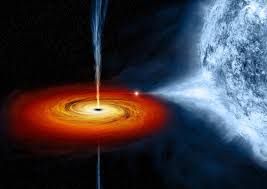Microscopic Monsters: Could Strange Black Holes Be the Hidden Source of Dark Matter?
It is believed that primordial microscopic black holes originated in the early stages of the universe, during the Planck epoch, in contrast to stellar black holes, which are created when huge stars collapse. Some speculate that fluctuations in density may have caused the spontaneous development of these small black holes, given the extreme heat and density of the cosmos at this period.
Dark matter has been one of cosmology’s biggest puzzles for many years. This material, which is invisible and is thought to make up 85% of all matter in the universe, has a strong gravitational pull-on galaxies yet is obstinately ignored. An unconventional explanation is put out in recent research by MIT physicists: what if dark matter isn’t a single, unidentified particle but rather the remains of a population of strange, microscopic black holes that erupted in the Big Bang’s flaming furnace?
In the past, researchers have thought of dark matter in terms of weakly interacting massive particles, or WIMPs—enigmatic particles that are thought to exist outside of the Standard Model of physics. Nevertheless, a great deal of research looking for WIMPs has shown negative results. This has prompted researchers to investigate other scenarios, and the MIT study explores the intriguing field of primordial black holes.
Professor of Physics David Kaiser’s research at MIT suggests that these primordial black holes wouldn’t be like their stellar cousins. According to their theory, these black holes might be “color-charged,” which means they would interact with one of nature’s fundamental forces—the strong nuclear force. Regular black holes do not have this feature; instead, they solely interact through gravity.
These primordial black holes would have had a brief existence. They are thought to have been exceedingly tiny, possibly cramming the mass of an asteroid into a volume the size of an atom. They would have quickly dissipated as the cosmos cooled and expanded because of a phenomena called Hawking radiation, which is the gradual loss of mass and energy in black holes.
But the secret is in how many of these microscopic black holes there might be. Their immense quantity, in spite of their brief existence, might have had a gravitational impact on the cosmos, affecting the development of massive structures such as galaxies and adding to the missing mass that scientists identify with dark matter.
The concept of dark matter in the form of primordial black holes is not wholly novel. But the interesting part of the MIT study is that these microscopic black holes are color-charged. A small echo of this unusual feature may have affected the nuclear fusion processes of the early cosmos, contributing to the abundance of light elements such as lithium.
“The color-charged black holes could’ve affected the balance of fusing nuclei, in a way that astronomers might someday detect with future measurements,” explains Kaiser. The concept of a primordial black hole would be strongly supported by such a detection.
Though intriguing, there are still issues with the concept. The research recognizes the challenge of accurately estimating the quantity and mass distribution of these theoretical black holes. It also has to be investigated precisely how nuclear fusion would have been impacted by color-charged black holes.
Despite the difficulties, this research provides an exciting new direction for the study of dark matter. This theory may drastically alter our knowledge of the composition and history of the cosmos if subsequent measurements of light element abundances or gravitational microlensing events confirm its predictions. Perhaps these strange, short-lived black holes—relics from the universe’s most severe birth pangs—are where the search for dark matter has unexpectedly gone.



